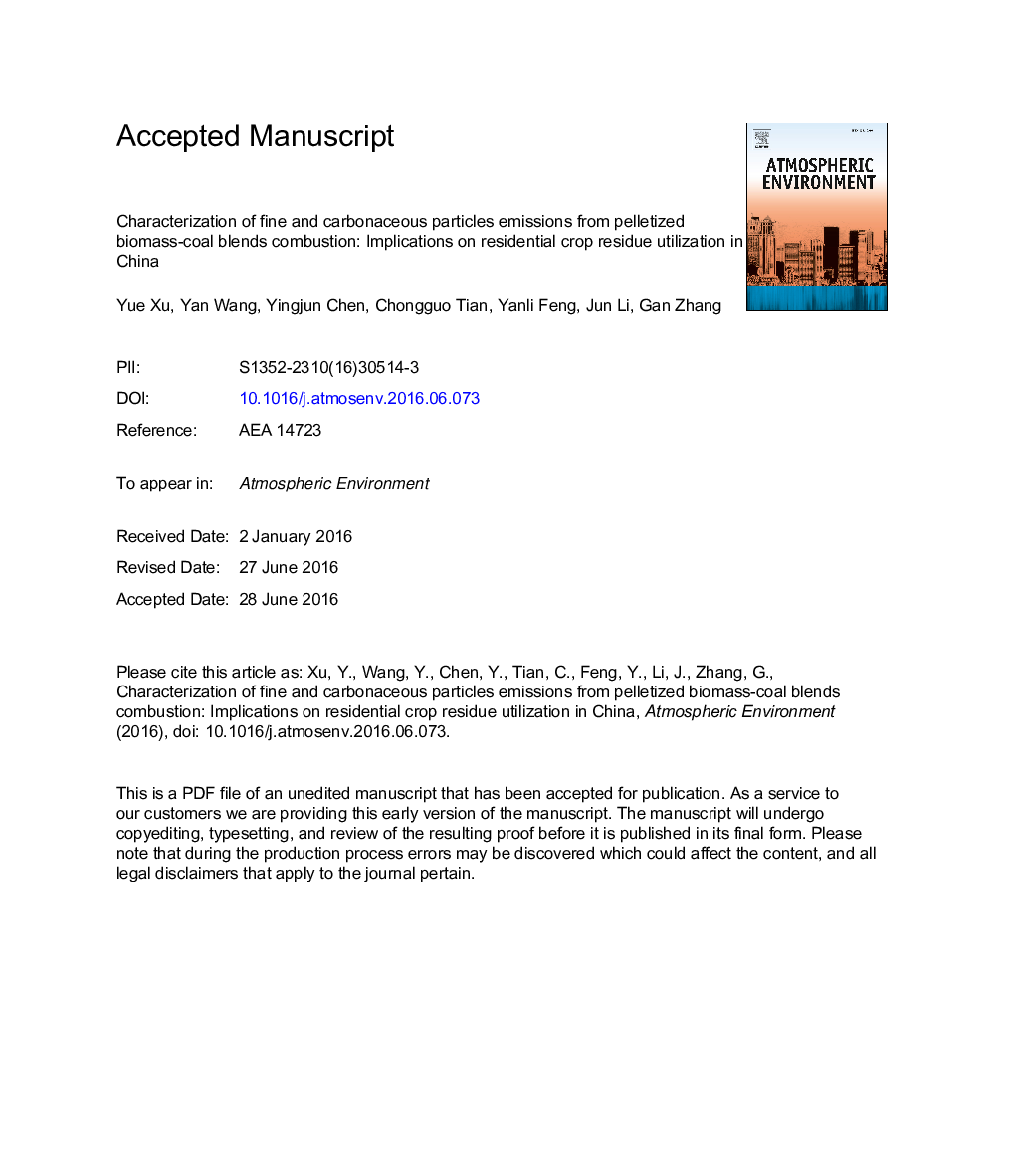| Article ID | Journal | Published Year | Pages | File Type |
|---|---|---|---|---|
| 6336049 | Atmospheric Environment | 2016 | 25 Pages |
Abstract
Bulk biofuel, biomass pellets and pelletized biomass-coal blends were combusted in a typical rural conventional household stove and a high-efficiency stove. Reductions in PM2.5, organic carbon (OC) and elemental carbon (EC) emissions were evaluated by comparing emission factors (EFs) among 19 combinations of biofuel/residential stove types measured using a dilution sampling system. In the low-efficiency stove, the average EFs of PM2.5, OC, and EC of biomass pellets were 2.64 ± 1.56, 0.42 ± 0.36, and 0.30 ± 0.11 g/kg, respectively, significantly lower than those burned in bulk form. EFPM2.5 and EFOC of pelletized biomass combustion in the high-efficiency stove were lower than those of the same biofuel burned in the low-efficiency stove. Furthermore, pelletized corn residue and coal blends burned in the high-efficiency stove could significantly decrease emissions. Compared with the bulk material burned in the low-efficiency stove, the reduction rates of PM2.5, OC and EC from pelletized blends in the high-efficiency stove can reach 84%, 96% and 93%, respectively. If the annually produced corn residues in 2010 had been blended with 10% anthracite coal powder and burnt as pellets, it would have reduced about 82% of PM2.5, 90-96% of OC and 81-92% of EC emission in comparison with burning raw materials in conventional household stoves. Given the low cost, high health benefit and reduction effect on atmospheric pollutants, pelletized blends could be a promising alternative to fossil fuel resources or traditional bulk biofuel.
Keywords
Related Topics
Physical Sciences and Engineering
Earth and Planetary Sciences
Atmospheric Science
Authors
Yue Xu, Yan Wang, Yingjun Chen, Chongguo Tian, Yanli Feng, Jun Li, Gan Zhang,
